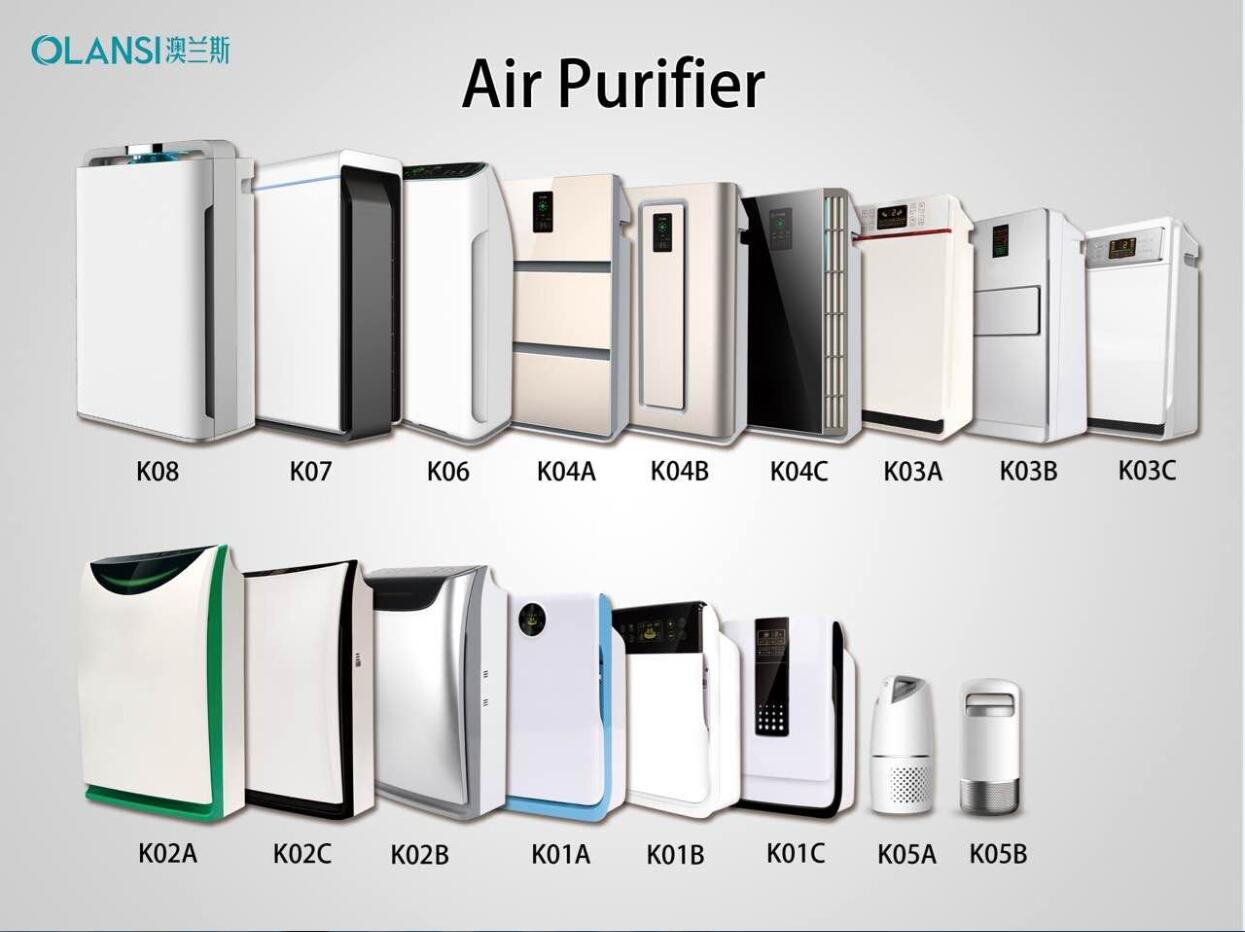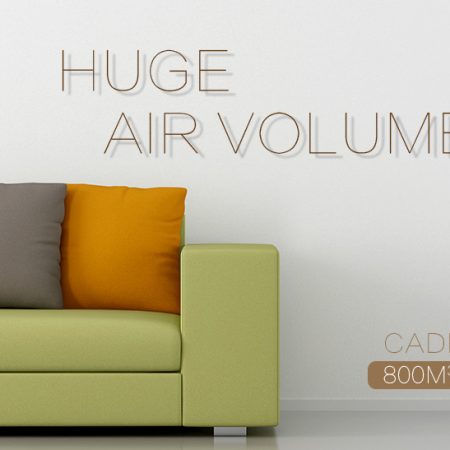The winter is approaching, a guide to the correct use of air purifiers
In the cold winter, everyone wraps themselves tightly, and the doors and windows are closed tightly to resist the cold wind outside, but when you are enjoying the warm indoor environment, you know that the indoor air quality is In a sharp decline-

According to statistics, the annual number of excess deaths caused by indoor air pollution in our country is 111,000, and the huge economic loss caused by this is sometimes as high as 10.7 billion U.S. dollars a year. The survey shows that people’s attention to indoor environmental pollution has changed significantly compared with before, but the overall level is still not optimistic. Only 30% of households said that it is necessary to ask inspection agencies for indoor environment testing.
So, in the cold and dry winter, how does indoor air affect people’s health?
The winter is approaching, a guide to the correct use of air purifiers
Winter hypoxia is bothering urbanites
Entering winter, the number of patients visiting the hospital due to symptoms such as fatigue, lack of energy, chest tightness, shortness of breath, headache, etc. began to increase significantly. At the same time, many people began to feel pressure to breathe or the frequency of colds increased, and some people experienced drowsiness and slow reflexes. Some health experts pointed out that the appearance of these symptoms is related to people’s reaction to the outside world when the season changes, but the other most important reason is that due to the decrease in temperature, people spend more time in enclosed spaces and lack of oxygen supply. Caused. Some experts also pointed out that if hypoxia is too long, a series of diseases may appear in the human body, and it may even be life-threatening. Therefore, winter is the season of high incidence of diseases, and we should be especially vigilant against hypoxia syndrome.
As the temperature drops, every family closes their doors and windows, and people greatly reduce their opportunities for outdoor activities. I don’t know that, under various confined conditions, people are hypoxic in the body, especially if they cannot breathe fresh air, and the brain is hypoxic for a long time, which will cause various diseases. According to a survey, it was found that students’ “not awake” is related to the air quality in the classroom. Too many classrooms are one of the reasons why the air is not up to standard. Forty to fifty people are crowded into a room, and the space occupied by each student is too small. Careless ventilation has led to an increase in hypoxia. Especially in winter, when everyone is warm, and the doors and windows are not opened, the air in the classroom cannot be replaced or replenished all day, which can easily cause the air quality to drop. Lack of oxygen can cause students to feel fatigue and lack of energy. “Medical experts reminded: Severe hypoxia can cause chest tightness, shortness of breath, dizziness, headaches, etc., and reduce the body’s immunity.
There is also a more serious phenomenon. Residents in many areas of our country have the habit of heating coal stoves or charcoal fires in winter, which is more likely to cause carbon monoxide poisoning and hypoxia. If good ventilation conditions are not maintained, it will not only bring all kinds of Diseases, the most serious ones, endanger life and safety. There are countless cases of this kind every year. Therefore, every winter is a period of high incidence of hypoxia, and it is also the season when people should pay the most attention to health.
Beware of formaldehyde poisoning in winter decoration
Not long ago, Mr. Wang liked to move to a new house, but he did not expect to get into trouble because of it: Since moving into the new house, he has always had dry nose, itchy pharynx, and occasionally a small amount of phlegm. Mr. Wang has been to the hospital many times. The doctors treated him as colds and asked him to take cold medicines and antibiotics, but there was no obvious effect. Finally, he found the Indoor Environment Testing Center of the Interior Decoration Association. The staff of the center went to his home for a test and found that the “root of disease” was in the air of the new home: the formaldehyde content in the air in their home reached 0.44 mg per cubic meter, which was 5.5 times higher than the national standard!
Modern scientific research shows that formaldehyde has a negative impact on human health. When the indoor content is 0.1 mg/cubic meter, there will be peculiar smell and discomfort; 0.5 mg/cubic meter can irritate the eyes and cause tearing; 0.6 mg/cubic meter can cause throat discomfort or pain; high concentrations can cause nausea, vomiting, Cough, chest tightness, wheezing and even emphysema; when the air reaches 230 mg/m3, it can cause death immediately.
Long-term exposure to low-dose formaldehyde can cause chronic respiratory diseases, women’s menstrual disorders, pregnancy syndrome, lower newborn physique, chromosomal abnormalities, and even nasopharyngeal cancer. High concentrations of formaldehyde are toxic to the nervous system, immune system, liver, etc. It can also stimulate the eye conjunctiva and respiratory mucosa to produce tearing and runny nose, causing conjunctivitis, pharyngitis, asthma, bronchitis and allergic diseases. Formaldehyde also has teratogenic and carcinogenic effects. According to epidemiological investigations, people who have been exposed to formaldehyde for a long time can cause cancers in the nasal cavity, oral cavity, nasopharynx, throat, skin and digestive tract.
At present, it is nine cold days, and it is also a season with high incidence of various colds and respiratory diseases. Harmful substances such as formaldehyde and ammonia produced by buildings, decorations and furniture stimulate people’s respiratory system and reduce immunity, which not only increases the chance of catching a cold, but also aggravates the existing cold symptoms. Therefore, if your cold and other respiratory diseases cannot be cured for a long time, should you ask the relevant agency to check your indoor air?
Winter air humidity can also affect health
People live in an environment with a relative humidity of 45%-65%RH and a humidity index of 50-60. The indoor humidity during the heating period in winter is usually only 15%RH. After staying in such a room for a long time, it will often appear The phenomenon of drying up and getting angry.
In a dry environment, the resistance of the human respiratory system is reduced, which is likely to cause or aggravate respiratory diseases. Studies have shown that when the air humidity is lower than 40%RH, the respiratory mucosa of the nose and lungs becomes dehydrated, its elasticity decreases, mucus secretion decreases, the movement of cilia on the mucosa slows down, and dust and bacteria are easy to adhere to the mucosa, causing irritation. Coughing in the throat is also prone to bronchitis, bronchial asthma, and other diseases of the respiratory tract.
When the air is dry, influenza viruses and gram-positive bacteria that can cause infections multiply faster, and they are also likely to spread with dust in the air and cause diseases. Dry air dehydrates the human epidermal cells and reduces the secretion of sebaceous glands, causing the skin to be rough, wrinkled and even cracked. Therefore, allergic diseases such as allergic dermatitis, skin itching and discomfort are also related to dry air. Dry air also has an adverse effect on human immunity.
It’s time to disinfect the indoor air in winter
In order to effectively prevent indoor pollution from harming health in winter, health professionals put forward some suggestions for “disinfecting indoor air”. The specific methods are as follows:
1. Open windows regularly every day for ventilation to keep indoor air fresh. For office buildings and homes where conditions permit, it is advisable to ventilate the air purifier brand three times for 20 minutes each time. Experiments have shown that every air change in the room can remove 60% of the harmful gases in the indoor air;
2. Choose a suitable indoor air purifier, and often carry out indoor air purification and disinfection. Vinegar can be used to purify the air during the high-incidence period of influenza, because the volatilization of vinegar has a sterilizing effect in the air;
3. Maintain a proper indoor temperature to avoid excessive temperature difference between indoor and outdoor. According to the national standard, the room temperature should be controlled at 16℃-24℃;
4. Increase indoor humidity. The most suitable indoor humidity in winter is 30% to 60%. You can choose a humidifier, or put a small sink on the radiator, or grow flowers and grass indoors to increase the humidity of the indoor air;
5. The living environment should be cleaned frequently to prevent the bacteria in the indoor air from exceeding the standard. Especially in closed office buildings, families with patients, children’s rooms, and families with pets, special agencies should be asked to conduct indoor bacteria testing.
- Newly decorated office buildings and families should pay attention to the detection and management of the indoor environment.
Olansi is a leading manufacturer based in Guangzhou. Olansi offer their products more than 40 countries and all main markets, providing first class service and support at all times. The company has been operating since 2009 and has almost 10 years experiences in the field of china air purifier and water purifier producing. To find out more, visit: www.oemairpurifier.com


